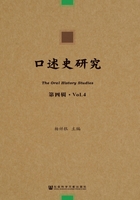
结语
阿利斯泰尔·汤姆森指出,世代在历史上是随机的:“它们是由共同的经历和年青一代的新世代意识所塑造的。它们在人们的记忆中被塑造和重塑,这些人利用世代身份认同来帮助他们理解自己的生活。它们是通过对世代利益和需求的集体主张而制定和复制的,而且,它们是通过对共同过去和共同世代身份认同的集体表征(collective representation)而得到巩固的。”[54]汤姆森正确地提醒我们,早期的共同经历是“世代”的一个关键组成部分,但它们并不是唯一的组成部分。自我定义为一代人的成员必须有一种主观的集体归属感,塑造这种世代身份认同的工作本身就深受其自身历史时刻的影响。这篇文章已经证明,这个创造和巩固的时刻可以发生在成型事件多年之后,而这些事件通常被认为是世代理解的基础。虽然成型事件很重要,但一个共同的回忆和叙述过程更重要,它会在事件发生几十年后的历史背景下发展为行动。
对于儿童幸存者来说,世代意识的形成不仅是要为他们自己确立“幸存者”这一身份认同,而且要以一种完全不同的方式去探索幸存意味着什么。雅克·费恩和费利斯·齐默尔恩·斯托克斯等人的叙述证词表明,这种探索有时早于事件发生,但毫无疑问,事件本身加速并固化了这种重构。这次集会提供了一个背景和一个时刻,在这个时刻,儿童幸存者开始将他们自己的生命故事融入一个更加广泛且不断变化的故事当中。这个故事讲述的是大屠杀幸存者可能是谁,以及幸存可能具有哪些维度。20世纪80年代初,这次集会的历史时刻是一个分水岭,在此之后,许多当时已经步入中年的儿童幸存者开始将自己视为一个独特的世代群体的一部分。
口述历史是揭示这一世代建构过程的有力工具。在1983年那次集会上录制的访谈中,我们听到幸存儿童参与者们正在经历情感错位和归属感缺失,但我们同样听到他们正在采取措施,重新思考他们记忆的真正意义。在后来对这次集会的反思中,受访者对1983年的那次活动提供了一些深刻的见解,比如,它是如何让人们有机会建立人与人之间的联系,如何重新建构个人和集体的叙述,以及如何对共同经历进行不同的解读。后来的这些访谈还揭示了这一过程是如何展开,并在数年甚至数十年的时间里得以维持的,从而让我们有一个亲密的窗口来了解“世代”是如何被在历史上偶然的环境中工作的有责任心的个人和团体社会性建构(socially constructed)的。
[1]该文译自Rebecca Clifford,“Who is a Survivor? Child Holocaust Survivors and the Development of a Generational Identity,” Oral History Forum d'histoire orale ,Vol.37,2017,pp.1-23.经作者和杂志同意后在本刊发表,谨致谢忱!作者感谢英国科学院(British Academy)和利华休姆信托基金(Leverhulme Trust)的慷慨支持,还要感谢研究助理吉纳维芙·乔治(Genevieve George)和马修·沃勒尔(Matthew Worrall),以及两位匿名读者提供了深刻和有益的评论。
[2]丽贝卡·克利福德(Rebecca Clifford),英国斯旺西大学(Swansea University)历史系副教授,研究方向为20世纪西欧社会文化史、战争与大屠杀集体记忆、口述历史与情感史。
[3]详细定义可访问网站:http://www.ushmm.org/remember/the-holocaust-survivors-and-victims-resource-center/ survivors-and-victims,accessed on 1 November 2016。美国大屠杀纪念馆定义的包容性是其在1993年成立前辩论的结果,该辩论有时是激烈的,而且总是带有政治性的。有关非犹太人幸存者问题和该博物馆的历史,可参见Edward T.Linenthal,Preserving Memory:The Struggle to Create America's Holocaust Museum ,New York:Viking,1995,pp.114-123。
[4]有关战后早期对儿童的人道主义援助以及有关此项目的象征性的、政治的和意识形态的维度,可参见Daniella Doron,Jewish Youth and Identity in Postwar France ,Bloomington:Indiana University Press,2015;Tara Zahra,The Lost Children:Reconstructing Europe's Families after World War Ⅱ,Boston:Harvard University Press,2011;Hasia Diner,We Remember with Reverence and Love:American Jews and the Myth of Silence after the Holocaust,1945-1962,New York:New York University Press,2009,pp.150-215。
[5]关于艾希曼审判及其对公众“记忆”的影响,可参见Annette Wieviorka,The Era of the Witness ,Ithaca:Cornell University Press,2006。关于20世纪60年代和70年代公共领域越来越多地使用集中营影像的情况,可参见Habbo Knoch,“The Return of Images:Photographs of Nazi Crimes and the West German Public in the ‘Long 1960s’,” in Philipp Gassert and Alan E.Steinweis (eds.),Coping with the Nazi Past:West German Debates on Nazism and Generational Conflict,1955-1975,Oxford:Berghahn,2006,pp.31-49。 关于迷你电视剧《大屠杀》的影响,可参见 Jeffrey Shandler,While America Watches:Televising the Holocaust ,New York:Oxford University Press,1999,pp.155-178。
[6]有关大屠杀中儿童幸存者与受害者的最佳学术著作,可参见Deborah Dwork, Children with a Star:Jewish Youth in Nazi Europe ,New Haven:Yale University Press,1991。
[7]迄今为止,历史学家对儿童大屠杀幸存者的研究甚少。既有的学术研究几乎完全由心理学家和精神分析学家进行,他们在20世纪80年代开始研究儿童幸存者战时经历的长期影响,此时正值儿童幸存者自身开始形成集体身份(认同)的时期。这两个过程肯定是相互关联的。在这些学者中,最著名的是精神分析学家朱迪思·凯森伯格(Judith Kestenberg),她基本上是这一领域的先驱,因研究儿童幸存者而闻名于世。尤其可以参见Judith Kestenberg and Ira Brenner (eds.),The Last Witness:The Child Survivor of the Holocaust ,Washington:American Psychiatric Press,1996;Judith Kestenberg and Eva Fogelman (eds.), Children During the Nazi Reign:Psychological Perspectives on the Interview Process ,New York:Praeger,1994。
[8]据估计,共有约1.6万人参加了此次集会,但当晚参加公共活动的人数高达3万,详细内容参见Mike Feinsilber,“16,000 Survivors with 16,000 Stories,” Associated Press ,12 April,1983。约2400名儿童幸存者是我自己通过仔细阅读在该集会上收集来的分装在32个档案夹的成千上万页书面个人证词得出的数字,它们现封藏在美国大屠杀纪念馆的档案里(参见Record Group 02.002,“American Gathering of Jewish Holocaust Survivors Collection”),此外,我还阅读了大量在该集会上收集来的口述证词(参见USHMM,Record Group 50-119,“American Gathering of Jewish Holocaust Survivors Oral History Collection”,and USHMM,Record Group RG-50.477,“Oral history Interviews of the Bay Area Oral History Project”)。儿童幸存者提供了大约15%的书面证词和13%的口述证词,估计有2000~2400名儿童幸存者出席此次集会。然而,正如本文所指出的那样,由于参加集会的许多儿童幸存者对他们是否能自称幸存者感到不确定,有些人很可能不愿提供证词。如果是这种情况,我们可以假设实际数字要高一些。
[9]1981年在耶路撒冷也举行了类似的活动,即第一次世界犹太人大屠杀幸存者集会(the First World Gathering of Jewish Holocaust Survivors)。然而,耶路撒冷集会比华盛顿的要小得多,而且似乎没有产生1983年集会对儿童幸存者身份造成的那种巨大影响。
[10]“成人”群体中的许多人在他们解放时还很年轻,一般为十几岁和二十岁出头的年纪。因此,“成人”和“儿童”幸存者(实际上还有幸存者的孩子)的年龄差距可能不会超过几年。在流行的和一些关于“世代”的学术文献中,有一种趋势是将“世代”与“年龄群组”(age cohort)互换使用,但在这种情况下,这两个概念显然不是同义词。
[11]这条轨迹在其他地方未必是平行的。例如,被驱逐的法国犹太人的儿子和女儿(Sons and Daughters of Deported Jews of France)是一个由失去父母一方或双方的儿童幸存者运行的著名组织,于1979年正式成立,但其根源可以追溯到早期激进主义与20世纪60年代末发生的大规模社会运动。详细内容参见Rebecca Clifford,“Child Survivors,Generations,and Memory in post-1968 France”(待发表)。我目前还不知道有任何类似的探讨以色列“儿童幸存者”身份发展的研究,但这样的探讨将是及时的。
[12]在这里,如果受访者将自己定义为解放时期的孩子,那么我会将受访者视为儿童幸存者。这些访谈被保存在美国大屠杀纪念馆。157份访谈可以在编号为RG-50.119的馆藏中找到,另外170份访谈则保存在湾区大屠杀口述历史项目(Bay Area Holocaust Oral History Project)中(其副本保存在美国大屠杀纪念馆中,档案编号为RG-50.477)。
[13]有关福图诺夫和大浩劫基金会收藏的历史,可以参见Noah Shenker,Reframing Holocaust Testimony ,Bloomington:Indiana University Press,2015,Chapter 1 and Chapter 3。
[14]Margaret R.Somers,“The Narrative Constitution of Identity:A Relational and Network Approach,” Theory and Society ,Vol.23,No.5,1994,p.614.
[15]Alistair Thomson,“Australian Generations? Transformative Events,Memory and Generational Identity,” in Michael Bo″ss (ed.),Conflicted Pasts and National Identities:Composing Narratives of War and Division ,Aarhus:Aarhus University Press,2014,pp.55-68.
[16]Alan B.Spitzer,“The Historical Problem of Generations,” American Historical Review ,Vol.78,No.5,1973,p.1354.
[17]Karl Mannheim,“Essay on the Problem of Generations,” in Karl Mannheim,Essays on the Sociology of Knowledge ,London:Routledge,1952,pp.276-322.
[18]Karen Foster,Generation,Discourse,and Social Change ,New York:Routledge,2013,p.15.
[19]June Edmunds and Bryan S.Turner, Generations,Culture and Society ,Buckingham,Open University Press,2002,p.12;Mark Roseman,“Introduction:Generation Conflict and German History,1770-1968,” in Mark Roseman (ed.),Generations in Conflict:Youth Revolt and Generation Formation in Germany,1770-1968,Cambridge:Cambridge University Press,1995,pp.1-46;Bernd Weisbrod,“Cultures of Change:Generations in the Politics and Memory of Modern Germany,” in Stephen Lovell (ed.),Generations in Twentieth-Century Europe ,Basingstoke:Palgrave,2007,pp.19-35;Anna von der Goltz,“Introduction,”in Anna von der Goltz (ed.),‘Talkin’ ’bout My Generation’:Conflicts of Generation Building and Europe's ‘1968’,Gttingen:Wallstein Verlag,2011,pp.1-22.
[20]Anna von der Goltz,“Introduction,”in Anna von der Goltz (ed.),‘Talkin’ ’bout My Generation’:Conflicts of Generation Building and Europe's ‘1968’,Gttingen:Wallstein Verlag,2011,p.15.
[21]Susan Rubin Suleiman,“The 1.5 Generation:Thinking about Child Survivors and the Holocaust,” American Imago ,Vol.59,No.3,2002,p.277.
[22]Susan Rubin Suleiman,“The 1.5 Generation:Thinking about Child Survivors and the Holocaust,” American Imago ,Vol.59,No.3,2002,p.277.
[23]Susan Rubin Suleiman,“The 1.5 Generation:Thinking about Child Survivors and the Holocaust,” American Imago ,Vol.59,No.3,2002,p.283.
[24]关于“第二代”身份认同的发展,参见Arlene Stein,Reluctant Witnesses:Survivors,their Children,and the Rise of Holocaust Consciousness ,Oxford:Oxford University Press,2014。
[25]Peter Novick,The Holocaust and Collective Memory ,London:Bloomsbury,2001.
[26]Charles Fenyvesi,“‘The Trick is to Remember and to Forget’:Surviving the Holocaust,” reprinted in The Obligation to Remember ,Washington:The Washington Post,1983,p.38.这里作者指的是1978年在美国电视上播出的迷你剧《大屠杀》。
[27]New York Times ,10 February,1983.
[28]Washington Post ,11 April,1983.
[29]中央组织委员会成员,如Benjamin Meed、Sam Bloch、Ernest Michel、Roman Kent、Norbert Wollheim、Hirsch Altusky、Fred Diament、James Rapp和Solomon Zynstein等,均出生在20世纪10年代和20年代。Michel、Kent、Wollheim、Diament和 Rapp 是集中营幸存者,Meed、Bloch、Altusky和Zynstein 则在犹太人区中幸存下来。
[30]“The Holocaust:A Gathering of Survivors,” Washington Post ,9 April,1983.
[31]时任副总统老布什(George Bush Sr.)在集会上正式将钥匙交给美国大屠杀纪念委员会(United States Holocaust Memorial Council)主席埃利·威塞尔(Elie Wiesel)。参见The Obligation to Remember ,Washington:The Washington Post,1983,p.46。
[32]罗森萨夫特在1981年的耶路撒冷会议上组织了一个类似的活动项目,犹太人大屠杀幸存者儿童国际网络是在耶路撒冷建立的网络的基础上形成的。从这个意义上说,耶路撒冷会议对幸存者的孩子来说可能比对儿童幸存者来说更重要。
[33]Helen Epstein,Children of the Holocaust:Conversations with Sons and Daughters of Survivors ,New York:G.P.Putnam and Sons,1979; The Obligation to Remember ,Washington:The Washington Post,1983,p.34.值得注意的是,在美国(可能还有其他地方),为幸存者子女设立的团体比为儿童幸存者设立的团体早了近十年。
[34]The Obligation to Remember ,Washington:The Washington Post,1983,p.34.
[35]USHMM,RG-02.002,“American Gathering of Jewish Holocaust Survivors Collection.”
[36]Site Organizer Lawrence Goldberg,quoted in the Washington Post ,9 April 1983.
[37]The Obligation to Remember ,Washington:The Washington Post,1983,p.34.福格尔曼有关幸存者子女面临的心理问题的研究具有开创性意义。她是最早为幸存者的孩子组织心理治疗小组的心理学家之一,并于1976年在波士顿建立了第一个这样的治疗小组。当她的作品被记者海伦·爱泼斯坦讨论时,就变得广为人知了。参考Helen Epstein,“Heirs of the Holocaust,” New York Times ,19 June,1977,p.175。
[38]关于难民儿童运输(kindertransport),可参见Andrea Hammel and Bea Lewkowicz (eds.),The Kindertransport to Britain 1938/39:New Perspectives ,New York:Rodopi,2012。
[39]Serge Klarsfeld,Le Mémorial de la déportation des Juifs de France ,Paris:Klarsfeld,1978.在集会上,该书副本可供查阅,许多儿童幸存者通过这种方式第一次了解到他们父母的命运。在伊迪丝·雷默尔的案例中,她已经知道她的母亲死于1942年早期在居尔的一次外科手术中,但她第一次了解到,她父亲在被驱逐至奥斯威辛集中营之前,在居尔待了6个月。
[40]Interview with Edith Gerta Riemer,interviewer unspecified,13 April,1983,USHMM RG-50.119*0110.
[41]Alessandro Portelli,The Battle of Valle Giulia:Oral History and the Art of Dialogue ,Madison:University of Wisconsin Press,1997,p.185.
[42]Interview with Felicia Neufeld,interviewer unspecified,11 April,1983,USHMM,RG-50.119*0099.
[43]Katy Hazan, Les orphelins de la Shoah ,Paris:Belles Lettres,2000.
[44]Interview with Paul Kassy,Jacques Fein,and Felice Zimmern Stokes,interviewer unspecified,13 April 1983,USHMM RG-50.477*1361.
[45]这里的“……”表示停顿。
[46]这里的省略号“\[……\]”表示省略。
[47]费利斯·齐默尔恩·斯托克斯在集会上接受过两次采访:一次在对雅克·费恩与另一位儿童救济会帮助的参会者保罗·卡西的联合采访中进行,另一次是独自一人接受采访。具体参阅Felice Zimmern Stokes,interviewer unspecified,12 April 1983,USHMM,RG-50.119*0137。
[48]Interview with Jacques Fein,interviewed by Myra Katz and Froma Willen,24 November 1991,Fortunoff Video Archive for Holocaust Testimony,Yale University Archives,HVT-862.这部分所有雅克·费恩的后续引用都来自这次访谈。
[49]例如,可以参见大浩劫影像历史基金会(Shoah Visual History Foundation)对丽兹·哈特(Litzi Hart)就1987年在澳大利亚成立的第一个这样的组织的一些情况而开展的访谈,或对乔安娜·米伦(Joanna Millan)开展的访谈,她讲述了大约在同一时期英国第一个类似组织的建立情况。具体参阅Interview with Felizitas (Litzi) Hart,27 March 1995,interviewer Vanessa Ring,Shoah Foundation Visual History Archive,1224;Interview with Joanna Millan,15 February 1998,Shoah Foundation Visual History Archive,37960。
[50]费利斯·齐默尔恩·斯托克斯曾接受过耶鲁大学福图诺夫大屠杀证词视频档案馆和大浩劫基金会影像历史档案馆的采访。具体参阅Interview with Felice Zimmern Stokes,interviewed by Joni Sue Blinderman,30 December 1992,Fortunoff Visual Archive for Holocaust Testimony,Yale University Archives,HVT-2244;Interview with Felice Stokes,interviewed by Rosalie Franks,2 February,1998,Shoah Foundation Visual History Archive,38777。
[51]Interview with Felice Stokes,interviewed by Rosalie Franks,2 February,1998,Shoah Foundation Visual History Archive,38777.
[52]Interview with Felice Zimmern Stokes,interviewed by Joni Sue Blinderman,30 December,1992,Fortunoff Visual Archive for Holocaust Testimony,Yale University Archives,HVT-2244.费利斯还参加了于1993年在耶路撒冷举行的第二次隐藏儿童国际集会。关于间接引语使用的意义,可参见Deborah Tannen,Talking Voices:Repetition,Dialogue,and Imagery in Conversational Discourse ,Cambridge:Cambridge University Press,2007。
[53]Interview with Jacqueline Rosay,interviewed by Dana Kline and Lucille B.Ritro,13 June,1992,Fortunoff Visual Archive for Holocaust Testimony,Yale University Archives,HVT-1537.
[54]Alistair Thomson,“Australian Generations? Transformative Events,Memory and Generational Identity,” in Michael Bo″ss(ed.),Conflicted Pasts and National Identities:Composing Narratives of War and Division ,Aarhus:Aarhus University Press,2014,p.58.